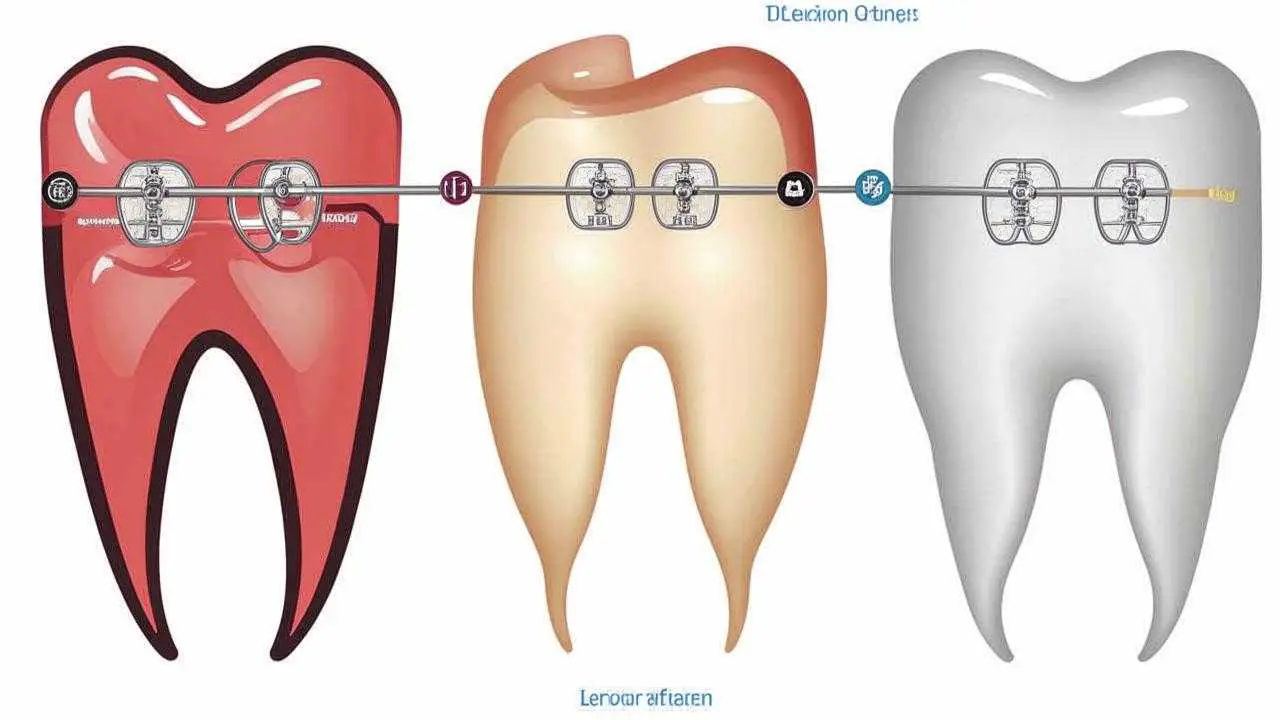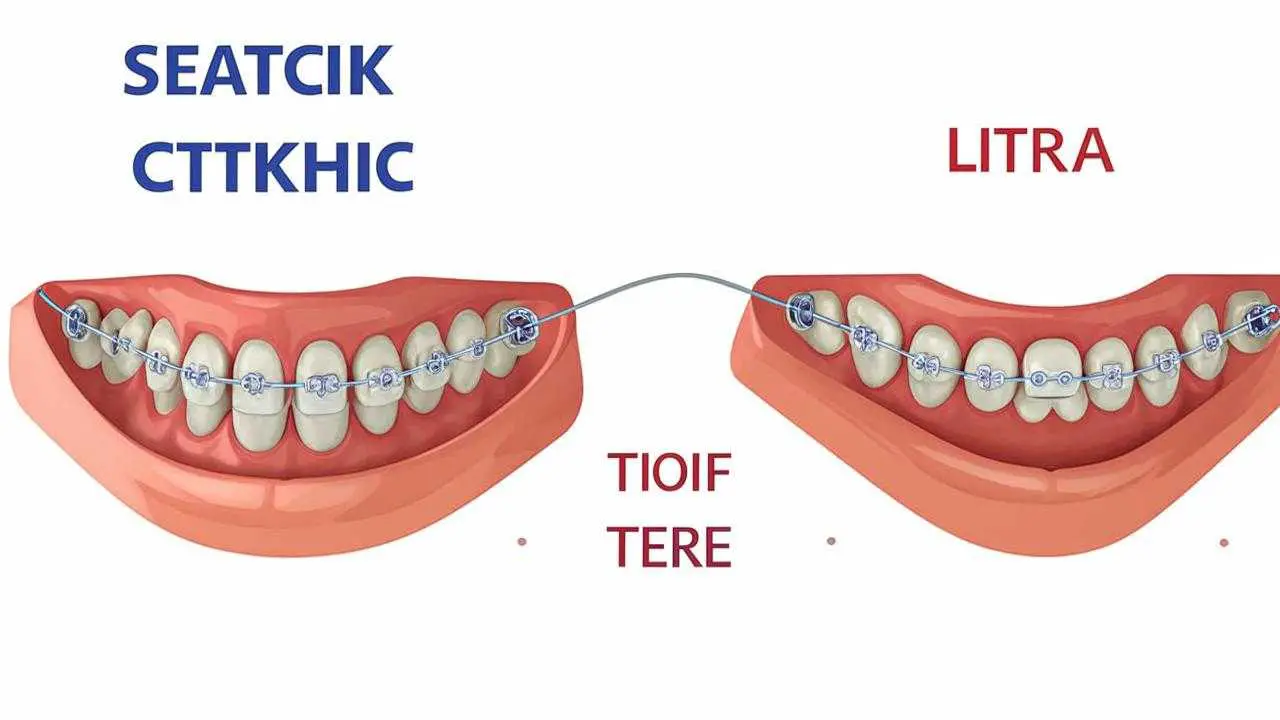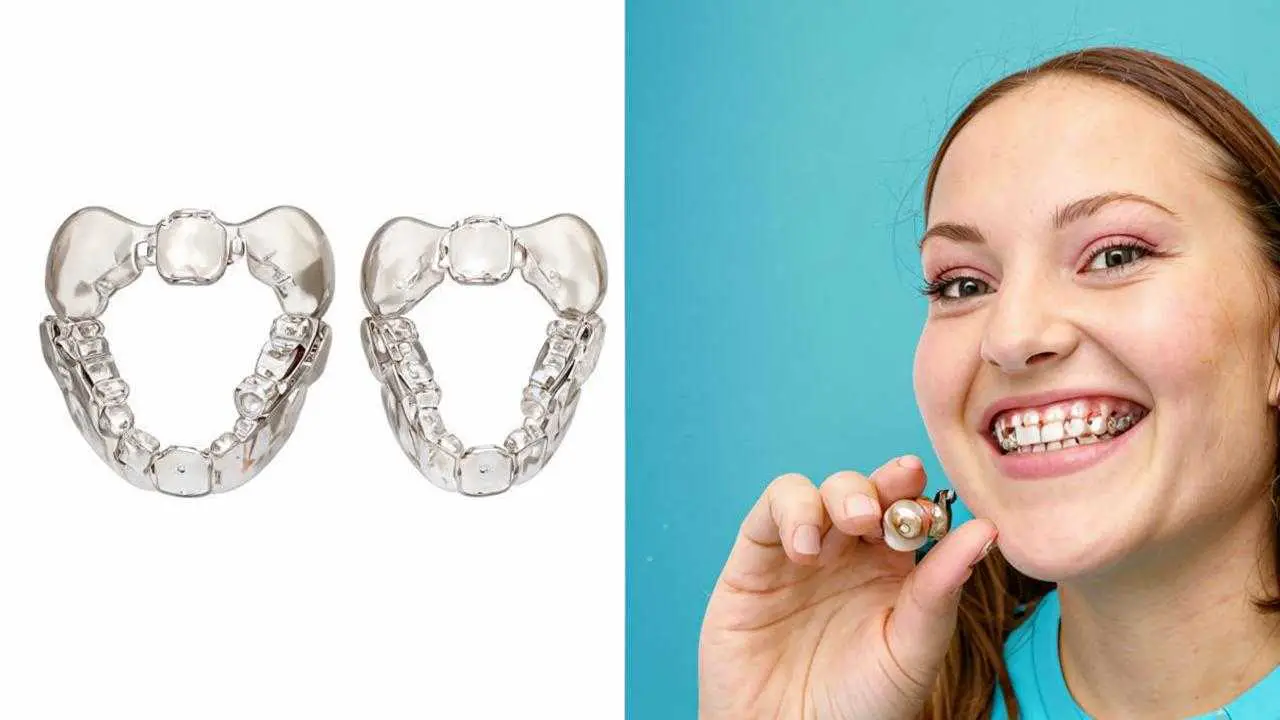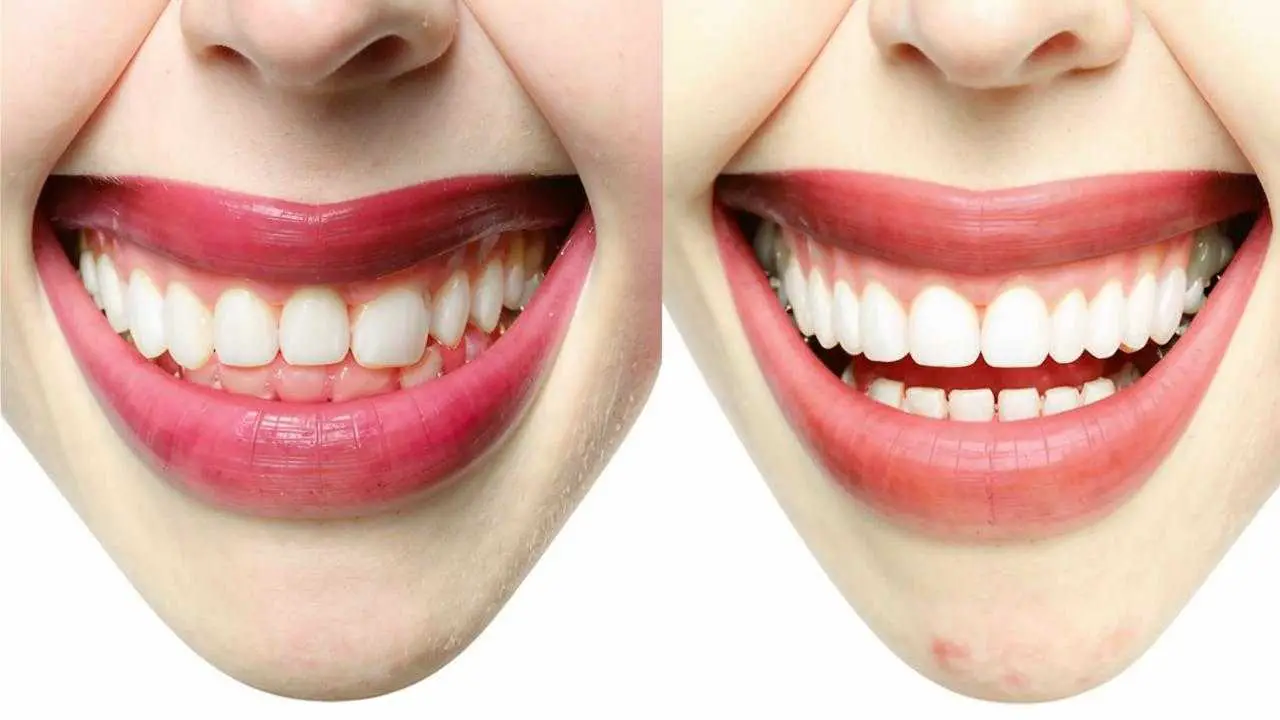Modern orthodontics offers very extensive options in the field of bite correction and teeth alignment. Technology is expanding and improving, and orthodontic systems are becoming more and more discreet and comfortable. Today, braces or eliners are used for treatment. Both technologies effectively cope with almost any orthodontic anomaly. Each has its own pros and cons. The principle of treatment methods do not differ much, the main difference between eliners and braces – in aesthetics, convenience of wearing.
What are braces?
Bracket-system – fixed orthopedic apparatus, consisting of locks with grooves (brackets), arc, which combines these locks into a single mechanism, additional elements – elastics, ligatures, through the grooves conduct the arc. The principle of operation lies in the ability of the metal arch to take the original shape. Straightening, it pulls the locks behind it, pulling the teeth to the desired position. The result is stabilized by fixed or removable retention devices.
Bracket systems differ structurally – they come in ligature, self-ligating, vestibular, lingual. They are made of a variety of materials: metal alloys (including gold), polycrystalline ceramics, synthetic sapphires. Metal devices are unrivaled in durability, the most aesthetic – ceramic and sapphire. Choosing what is better, eliners or braces for teeth alignment, take into account not only the aesthetic side. The main thing to start from is the possibilities of the system in a particular case.
When are braces installed?
- Bite disorders of any nature, complexity;
- crowding of teeth;
- disproportion of the jaws (one is less developed);
- dental anomalies;
- incorrect position of a tooth unit (curvature, rotation around the axis);
- extraction of an unerupted tooth;
- upcoming prosthetics, implantation.
Treatment with ligature appliances will take 2.5-3 years, self-ligating – 1.5-2 years. The duration of adjustment depends on clinical features, the model of the system.
Eliners: what are these devices?
Eliners are transparent orthodontic mouthguards made of thermoplastic polymer composite. The difference between braces and eliners is that the pressure on the dental units is not exerted by the locks connected to the arch, but by special activators inside the device that set the impulse to shift the dental unit. To achieve the desired results, a set of correctors of different thicknesses, shapes, and sizes is made.
Each pair is created taking into account the predicted trajectory of displacement of the dental unit to a given position. The mouthguards are sequentially changed from a larger size to a smaller one (every 2 weeks). All eliners in the set are numbered, so the patient knows exactly which system to use in a particular period. The corrective device is worn 20-22 hours a day, every day, removing it only for meals and hygienic care.
Those who want to choose eliners instead of braces need to think carefully about how responsible they are for the treatment. Corrective devices often cause discomfort, pain, especially when changing the arch, mouthguards. And if the bracket system can not be removed, adaptation has to be tolerated, then the mouthguards can be removed at any time or “forget” to put on. This increases the correction time, and often reduces the treatment to zero. Therefore, eliners are suitable only for patients who are really motivated for results. Those who have self-discipline limp, it is better to choose braces.
When are eliners fitted?
- Tremas, diastemas;
- crowding of teeth (up to 6 mm);
- shortening or lengthening of incisors (vertical occlusal anomalies);
- Rotation (malposition) of the dental unit;
- tooth deviates forward, backward;
- upcoming prosthetics or implants.
The duration of treatment on eliners depends on the degree of complexity of the violation. The course of correction can take from 8 months to 2 years and more. Each design has an individualized trajectory of weak forces acting on the dental units. One device shifts an abnormally located tooth by 0.2-0.3 mm. How many correctors will be required for a set depends on the situation – the simpler the problem, the fewer eliners are needed.
The first pair of devices corresponds to the initial clinical picture, each subsequent pair includes corrections to change the position of the teeth. The last pair shows the result of the treatment.
What is the difference between braces and eliners
Both correctors are designed for the same task: they correct the occlusion and make the tooth row straight. The principle of action of the constructions is identical – moving the dental units to a given point, but the similarity ends there.
- Bracket-system affects the tooth row using locks and tension arc, and eliners create an impulse to displace the tooth with special activators.
- Braces are a fixed system, which is installed for the entire course of treatment, while eliners are removable devices, which the patient can remove and install independently.
- Orthodontic mouthguards in no way violate the usual way of life and nutrition, when using braces there are certain restrictions in the diet.
- Maintaining hygiene of biopolymer mouthguards is easier than cleaning a bracket system consisting of many elements.
- Elements of braces can traumatize the mucosa, interfere with clenching, tongue functions, created from elastic inert thermoplastic eliners, these disadvantages are devoid of.
- Arc locks are conspicuous (except for lingual systems), made of transparent material mouthguards are almost impossible to see from the outside.
Choosing eliners or braces for teeth alignment, it is impossible to say unequivocally what will be better. Not in every clinical situation, mouth guards are the most effective, but they are undoubtedly the most comfortable. For each situation, the dentist will offer several treatment options, and the patient will choose the best one in terms of price, aesthetics and functionality.
Alignment of teeth with eliners or braces: what corrects defects faster?
The effectiveness of modern corrective devices is almost similar, but in some clinical cases it is not advisable to install mouth guards. This applies to severe, sagittal bite abnormalities, in which the corpuscle movement of dental units is necessary. Such defects can be treated more quickly and effectively with braces. Usually treatment with braces takes 1.5-3 years (depends on the model, the initial clinical picture). Self-ligating systems cope faster than ligature systems.
Eliners can correct almost any anomaly, but correction of complex defects requires a lot of time and a large number of mouthguards, which will significantly increase the cost of treatment. Usually, treatment with orthodontic mouthguards takes from 6 months to 2 years.
It is impossible to answer unequivocally what is more effective. The orthodontist will comprehensively assess the situation, based on the results of the examination, scans, the condition of the teeth, will recommend mouth guards or braces to align the teeth. The best option is the one that is best suited for the specific problem at hand
Comparison of eliners and braces
Braces
| mouthguards | |
Predicting the result of the adjustment | Approximate planning taking into account the mechanics of the teeth | The patient can see the exact result at the 3D planning stage. |
Aesthetics | Visible when talking or smiling (except for lingual models). | Unnoticeable to others even up close (face-to-face) |
Removable | Only the orthodontist installs and removes braces. | The patient removes and installs the braces himself. |
Comfort | The design of locks, retainers, additional elements, can traumatize the mucosa, worsen the sound pronunciation during the adaptation period, there are dietary restrictions. | Invisible, flexible, lightweight biopolymer devices, do not affect diction, do not need to change diet, provide easy care |
Enamel trauma | Demineralization is not uncommon under the locks, accumulation of bacterial plaque under the tension arch, between the locks promotes caries | Do not traumatize the enamel layer, soft tissues, plaque from the surface can be easily removed with an ordinary toothbrush. |
How often to visit the orthodontist | To activate ligature appliances, the doctor is visited every 3-4 weeks, self-ligating – every 2-2.5 months. | every 2-3 months |
Pros and cons of eliners and braces
- After fixation of the bracket system requires about 2-3 weeks to get used to the design. The adaptation period is accompanied by discomfort in the mouth, traumatization of the mucosa, changes in sound pronunciation. Adaptation to eliners is faster and causes minimal discomfort.
- Orthodontic mouthguards are removed during meals, so you do not need to change your eating habits. Wearing fixed braces implies certain restrictions in the diet.
- Compared to braces, clear mouthguards are more aesthetically pleasing as they are completely invisible on the teeth, but in some clinical cases they are not effective. If a case of teeth movement is necessary, a bracket system will cope faster, more easily. Correction with eliners for a similar problem will take much longer.
- Braces are more demanding to care, using aligners, hygiene is carried out in the standard way.
- The cost of bracket-systems made of metal is much lower than the price of eliners. Models made of sapphire or ceramic are almost identical in price to mouthguards.
- When used correctly, both systems effectively solve bite problems.
Example of treatment with braces at ROOTT Clinic
Cost of treatment
In ROOTT clinics in Moscow, the price of orthodontic treatment with braces and eliners is formed “turnkey”. The period of correction of the dentition with eliners is planned according to the 3D-plan. The cost is determined by the correction program according to the complexity of the clinical case. The more complex the pathology, the more corrective mouth guards are needed for the course, the more expensive the treatment will be. The price of teeth alignment on braces includes the cost of the orthodontic system, its installation, control visits, activation and removal.
Eliners can not always replace braces. Sometimes treatment with fixed systems is more effective. The orthodontist makes a decision based on the results of a comprehensive diagnosis, comprehensive assessment of the clinical picture.



